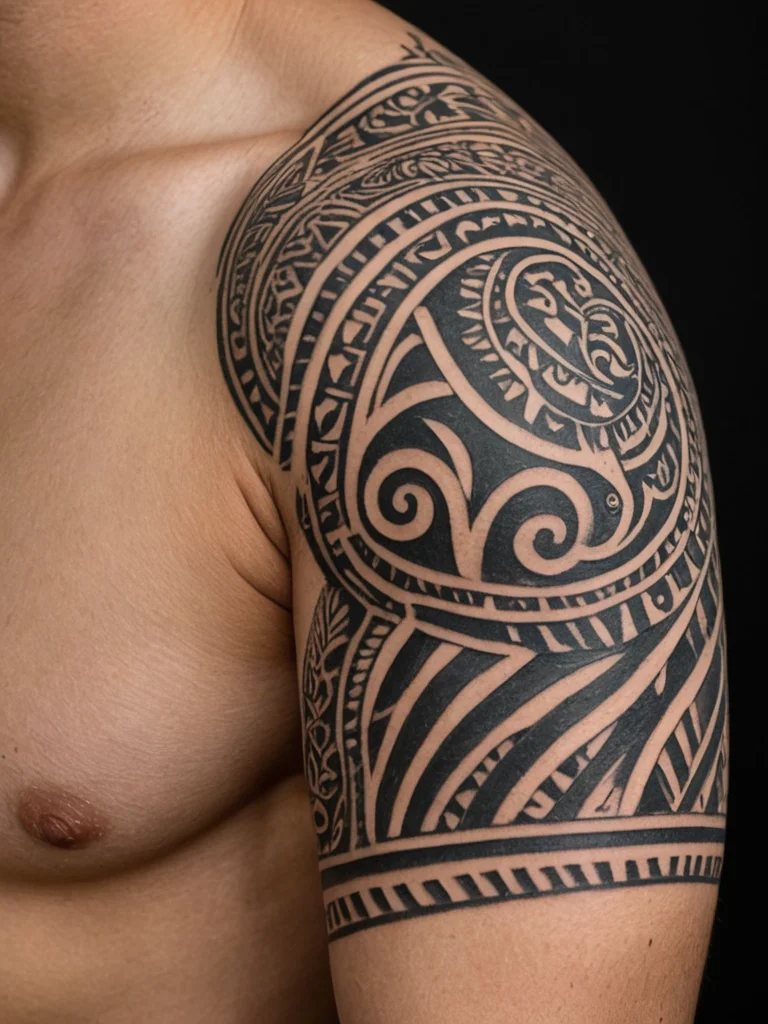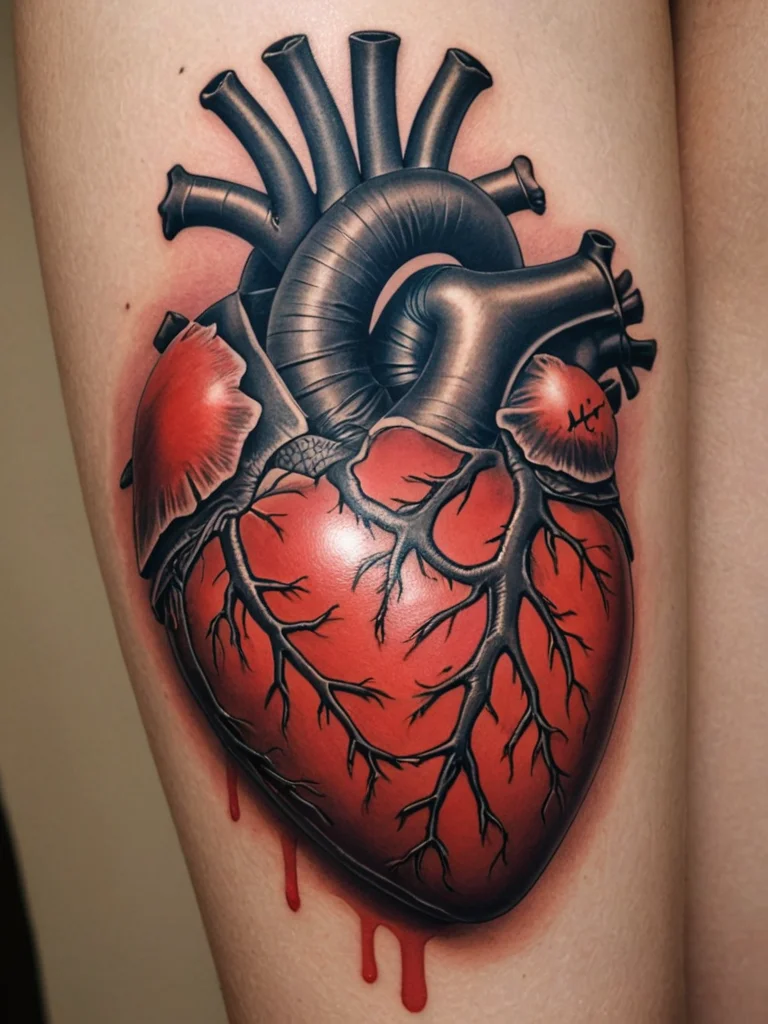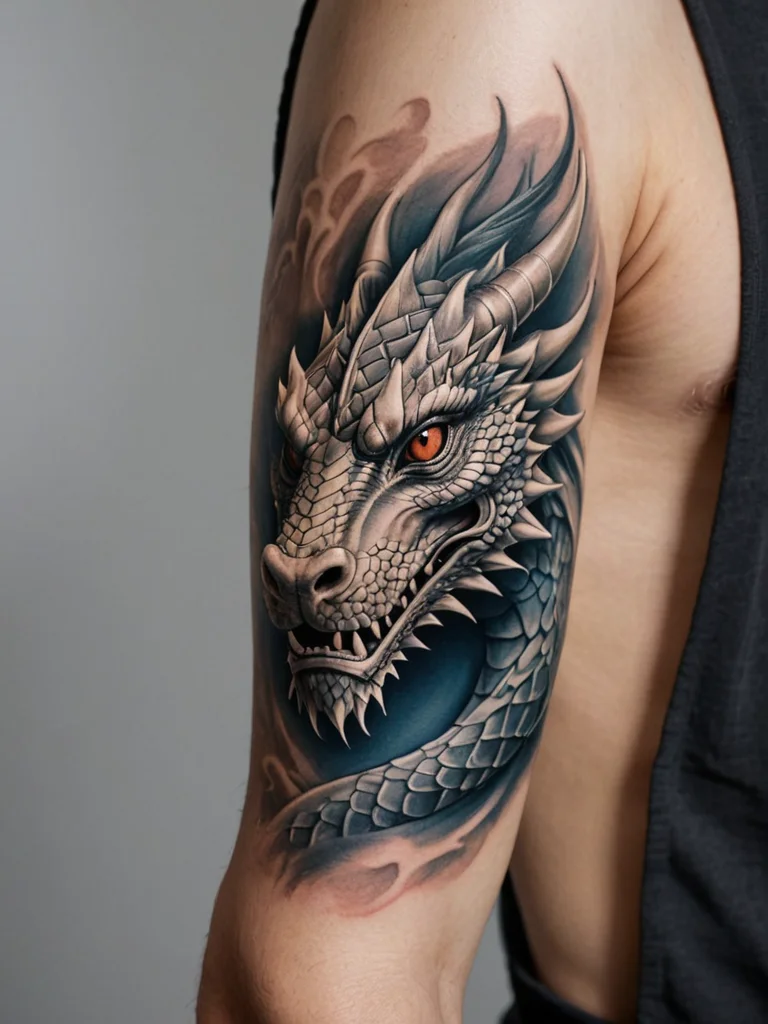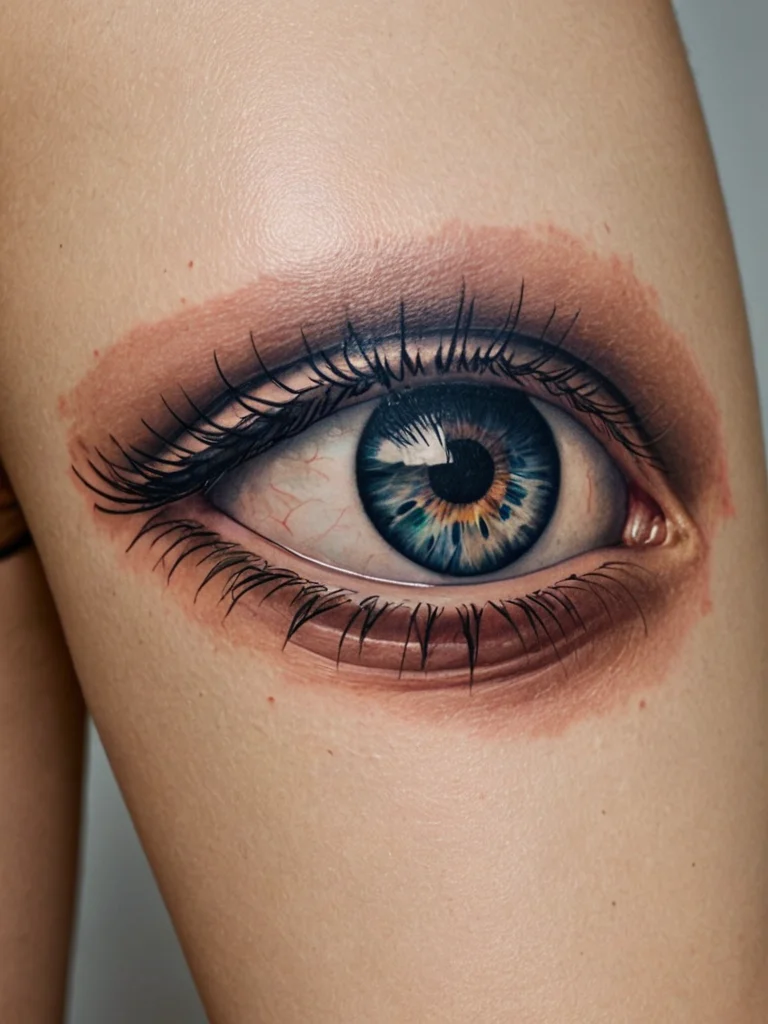For many athletes, tattoos are more than just body art; they are a form of personal expression, a declaration of identity, or a constant reminder of a significant achievement or belief. From intricate sleeves that tell a story to minimalist symbols that carry deep meaning, ink has become an integral part of the modern athlete’s canvas. However, as sports performance relies heavily on the body’s ability to regulate temperature, a common question arises among the athletic community: do tattoos interfere with sweat glands and, consequently, athletic performance? This article delves into the science, the practical implications, and the expert opinions surrounding tattoos and the physiology of sweating, providing athletes with the knowledge they need to make informed decisions about their body art.
Understanding sweat glands and tattoo ink: the science behind it

To understand how tattoos might affect sweating, it’s crucial to first grasp how both sweat glands and tattoo ink function. The human skin is a complex organ with multiple layers, each playing a vital role in protection and regulation. Sweat glands, specifically eccrine glands, are responsible for producing sweat, a primary mechanism for thermoregulation. These glands are located in the dermis, the layer of skin beneath the epidermis. Eccrine glands have ducts that extend through the epidermis to the skin’s surface, where they open as pores. Their primary function is to release sweat, which evaporates and cools the body.
Tattooing, on the other hand, is a process that involves introducing pigment into the dermis. A tattoo machine uses a needle or a group of needles that rapidly oscillate, penetrating the epidermis and depositing ink particles into the dermis. The dermis is a more stable layer than the epidermis, which is constantly shedding. This stability is why tattoo ink remains visible for a lifetime, as the body’s immune system attempts to encapsulate and isolate the foreign pigment particles. The ink particles are too large to be easily removed by the body’s natural processes and are typically phagocytosed by dermal macrophages. Over time, these ink-laden cells remain in the dermis, creating the visible tattoo.
The critical point of interaction between tattooing and sweating lies in the location of the sweat glands. Since eccrine glands have their origins in the dermis and their ducts extend to the surface, the introduction of ink into the dermis raises questions about potential obstruction. Tattoo artists are trained to work within the dermis, aiming to deposit ink at a consistent depth. While the needles do penetrate the dermal layer where sweat gland structures reside, the primary focus is on pigment deposition, not the destruction of these structures. The needles are fine, and the process, when performed correctly, is designed to create the tattoo without fundamentally damaging the skin’s physiological functions.
The density of sweat glands varies across the body, but they are generally distributed across most of the skin’s surface, with higher concentrations in areas like the palms, soles, and forehead. Athletes often choose to tattoo areas that are highly active during sports, such as the arms, legs, and torso. It is in these areas that the potential for interaction between ink and sweat glands is most relevant. While the dermis is where the ink is deposited, the sweat gland’s duct traverses this layer to reach the surface. Therefore, the question becomes whether the presence of ink particles in the dermis can impede the passage of sweat through these ducts.
The microscopic structure of the skin reveals that sweat glands are complex coiled structures within the dermis, with a single duct extending upwards. Tattoo needles, while penetrating the dermis, are generally localized in their impact. Professional tattoo artists strive for a consistent depth, typically between 1 to 2 millimeters, which is well within the dermal layer. The needles are not designed to obliterate entire sections of the dermis or to inject ink in a way that would systematically block all nearby sweat gland openings. Instead, the ink is dispersed into the interstitial spaces and taken up by cells within the dermis.
It is important to note that the dermis is a relatively expansive layer, and while ink particles are introduced, they do not fill the entire dermal matrix. The spaces between these particles and the cells containing them are still available for physiological processes, including the traversal of sweat gland ducts. Therefore, while it’s theoretically possible for a tattoo needle to pass very close to or even through a sweat gland duct, the overall density of ink deposited and the precise nature of the tattooing process make a complete and widespread blockage of sweat glands highly unlikely.
Impact on athletic performance: how tattoos affect sweating and cooling

The primary concern for athletes regarding tattoos and sweating revolves around thermoregulation and its impact on performance. Sweating is the body’s natural air conditioning system. As sweat evaporates from the skin’s surface, it draws heat away from the body, helping to maintain a stable core temperature. If the body’s ability to sweat is compromised, especially in large tattooed areas, it could theoretically lead to overheating, reduced endurance, and impaired performance. However, the scientific consensus and empirical evidence suggest that this is rarely a significant issue for most athletes.
Several studies have investigated the relationship between tattoos and sweating. One notable study, often cited in discussions about this topic, involved participants with tattooed and non-tattooed skin areas. The researchers measured sweat production and skin temperature. The findings indicated that while there might be a slight reduction in sweat output in heavily tattooed areas compared to un-tattooed skin, the difference was not statistically significant enough to impair the body’s overall thermoregulatory capacity. The skin has a vast network of sweat glands, and even if a small percentage in a tattooed area were slightly less efficient, the remaining glands, coupled with un-tattooed skin areas, are typically sufficient to manage heat dissipation effectively.
The mechanism proposed for any potential reduction in sweating is that the ink particles and the inflammatory response during the healing process could temporarily block the small pores or ducts of the eccrine glands. However, once the tattoo is fully healed, the skin returns to its normal state, and the ink particles are encapsulated. The sweat glands are remarkably resilient. While the deposition of ink occurs in the dermis, the ducts themselves are narrow tubes that extend through this layer. Unless the tattooing process is unusually aggressive or covers an extremely large and continuous area with dense scarring, the ducts generally remain patent, allowing sweat to pass through.
For athletes, especially those in endurance sports or competing in hot and humid environments, maintaining optimal thermoregulation is paramount. Overheating can lead to heat exhaustion or heatstroke, significantly impacting performance and posing serious health risks. The concern is that a large, densely tattooed limb might not cool as efficiently as an un-tattooed one. However, the human body is adaptable. Even if a tattooed area sweats slightly less, the body can compensate by increasing sweat production in other, un-tattooed areas. Furthermore, the efficiency of sweating is not solely dependent on the number of active glands in a specific spot, but on the overall capacity of the skin to produce and release sweat and the environmental conditions allowing for evaporation.
Moreover, the type and extent of tattooing play a role. A small, minimalist tattoo on an ankle is unlikely to have any discernible impact. Even extensive sleeve tattoos, covering an entire arm, typically do not result in a measurable decrease in an athlete’s ability to cool down. The skin is a large organ, and the percentage of surface area covered by tattoos, even extensive ones, is usually not enough to compromise the entire thermoregulatory system. The body’s response to heat is complex, involving not just sweating but also vasodilation (widening of blood vessels to release heat) and changes in heart rate and blood flow distribution. These other mechanisms also contribute to maintaining core body temperature.
It is also important to differentiate between the healing process and a fully healed tattoo. During the initial healing phase, the skin is inflamed, sensitive, and may be more prone to irritation. In this period, excessive sweating or friction can indeed be problematic, potentially leading to infection or hindering the healing process. However, once the tattoo is healed, the ink is stabilized within the dermis, and the skin’s normal functions largely resume. Any perceived reduction in sweating is usually minimal and does not typically translate into a noticeable performance deficit for the vast majority of athletes.
Tattoo aftercare for athletes: protecting your skin and your performance

Proper aftercare is crucial for any new tattoo, but it takes on added importance for athletes. The healing process for a tattoo typically takes 2 to 4 weeks, during which the tattooed skin is essentially an open wound. During this sensitive period, athletes must be extra vigilant to protect their new ink from damage, infection, and factors that could impair its appearance or the skin’s function.
For athletes, the primary aftercare considerations include keeping the tattoo clean, moisturized, and protected from friction and excessive moisture. Keeping the tattoo clean is paramount to prevent bacterial infections. Gentle cleansing with a mild, fragrance-free soap and lukewarm water is recommended. After cleansing, the tattoo should be patted dry with a clean paper towel – never rubbed with a cloth that could harbor bacteria or cause friction. Applying a thin layer of a recommended tattoo aftercare product or a fragrance-free moisturizer helps keep the skin hydrated and aids in the healing process.
Protection from friction is a key concern for athletes, as sports often involve repetitive movements, tight clothing, or equipment that can rub against the skin. During the initial healing phase, it is advisable to wear loose-fitting clothing over the tattooed area to minimize friction. If the tattoo is on a limb that requires compression wear for support, athletes might need to adjust their training schedule or ensure the compression wear is exceptionally clean and soft, or consider temporary covering for the tattoo that allows airflow but protects from chafing.
Excessive moisture can also be detrimental during the healing process. While showering is necessary, prolonged soaking in baths, hot tubs, or swimming pools should be avoided. These environments can introduce bacteria and prolong the healing time. For athletes who train frequently, this might mean opting for shorter showers and avoiding intense, sweat-inducing workouts for the first few days if possible, or ensuring the tattooed area is thoroughly but gently cleaned and re-covered afterwards.
Sun exposure is another significant factor to consider. UV radiation can fade tattoo ink, damage the healing skin, and increase the risk of skin cancer. Athletes often train outdoors, making sun protection vital. Once a tattoo is fully healed (typically after a month), daily application of high-SPF sunscreen is recommended to preserve the vibrancy of the ink. During the healing period, direct sun exposure on a new tattoo must be avoided at all costs. Covering the tattoo with clothing is the best form of protection.
Hydration and nutrition also play a role in skin healing. Athletes are generally aware of the importance of staying hydrated and consuming a balanced diet to support their performance. These practices also benefit skin health and the tattoo healing process. Adequate protein intake, vitamins, and minerals contribute to skin repair and immune function, helping the body to heal the tattooed area efficiently and effectively.
Managing sweat during workouts while a tattoo is healing requires careful attention. While some sweating is inevitable, athletes should try to keep the tattooed area as dry as possible. Wicking fabrics can help draw sweat away from the skin. After a workout, it’s important to gently clean the tattooed area to remove sweat and any potential contaminants. If the tattoo is on a high-sweat area like the back or chest, athletes might consider using a breathable bandage that is specifically designed for wound protection and allows some airflow, ensuring it is changed regularly according to the tattoo artist’s or healthcare provider’s instructions.
Expert insights and common misconceptions: what athletes need to know

The relationship between tattoos and sweat glands has been a subject of discussion and concern within the athletic community. Tattoo artists and dermatologists often field questions about the potential long-term effects of ink on skin function, particularly for active individuals. The prevailing expert opinion is that well-executed tattoos by reputable artists do not significantly impede the body’s ability to sweat or regulate temperature.
Many experienced tattoo artists emphasize the precision of modern tattooing equipment. They work with fine needles designed to deposit ink efficiently into the dermis. While the needles do pass through the dermis, the process is not meant to cause widespread damage or obliteration of sweat glands. Tattoo artists typically aim for a consistent depth, avoiding overly deep or shallow applications that could lead to poor ink retention or excessive scarring, both of which are more likely to cause skin issues than the ink itself.
Dermatologists often corroborate this view. Dr. Sarah Davies, a leading dermatologist specializing in sports medicine, states, “While it’s true that ink particles are deposited in the dermis, and sweat glands originate and traverse this layer, the density of ink is not typically sufficient to block the vast network of eccrine glands. The skin is a remarkable organ, and the ducts are very narrow. Unless there is significant scarring or an inflammatory reaction that leads to obstruction, the normal function of sweat glands is generally preserved in tattooed areas.”
One common misconception is that tattoos create a solid barrier, like a plastic wrap, over the skin, preventing any interaction with the environment. In reality, tattoo ink particles are dispersed within the dermal tissue and are surrounded by the skin’s natural matrix. The skin remains permeable to gases and fluids, and the sweat glands continue to function. Another misconception is that all tattooed areas will sweat less. While some minor localized differences might theoretically exist, they are usually imperceptible and do not impact overall thermoregulation during physical activity.
Athletes sometimes worry about increased susceptibility to skin infections or heat-related illnesses due to their tattoos. While any breach of the skin barrier carries a risk of infection, this is primarily a concern during the healing phase. Once a tattoo is fully healed, the skin’s protective barrier is restored. The risk of infection from a healed tattoo is no greater than the risk of infection from any other minor skin abrasion. Regarding heat illness, as mentioned earlier, the body’s compensatory mechanisms for thermoregulation are robust. Athletes who are well-hydrated, acclimatized to their environment, and listen to their bodies are unlikely to suffer heat-related issues solely because of their tattoos.
The key takeaway for athletes is that responsible tattooing and diligent aftercare are essential. Choosing a reputable tattoo artist who adheres to strict hygiene standards and has a good understanding of skin anatomy is paramount. Following the artist’s aftercare instructions meticulously during the healing process will minimize the risk of complications and ensure the tattoo heals properly, allowing the skin to function optimally. For those concerned about specific areas, consulting with both a tattoo artist and a dermatologist can provide personalized advice based on the individual’s skin type and the intended tattoo design.
In conclusion, while the idea that tattoos might interfere with sweat glands is a logical concern for athletes, the scientific and expert consensus suggests that this interference is minimal, if present at all, in fully healed tattoos. The body’s thermoregulatory system is resilient, and the processes of tattooing and sweating are generally compatible. Athletes can confidently express themselves through body art, provided they prioritize quality tattooing and diligent aftercare, ensuring their skin remains a healthy and functional canvas for both art and athletic pursuit.